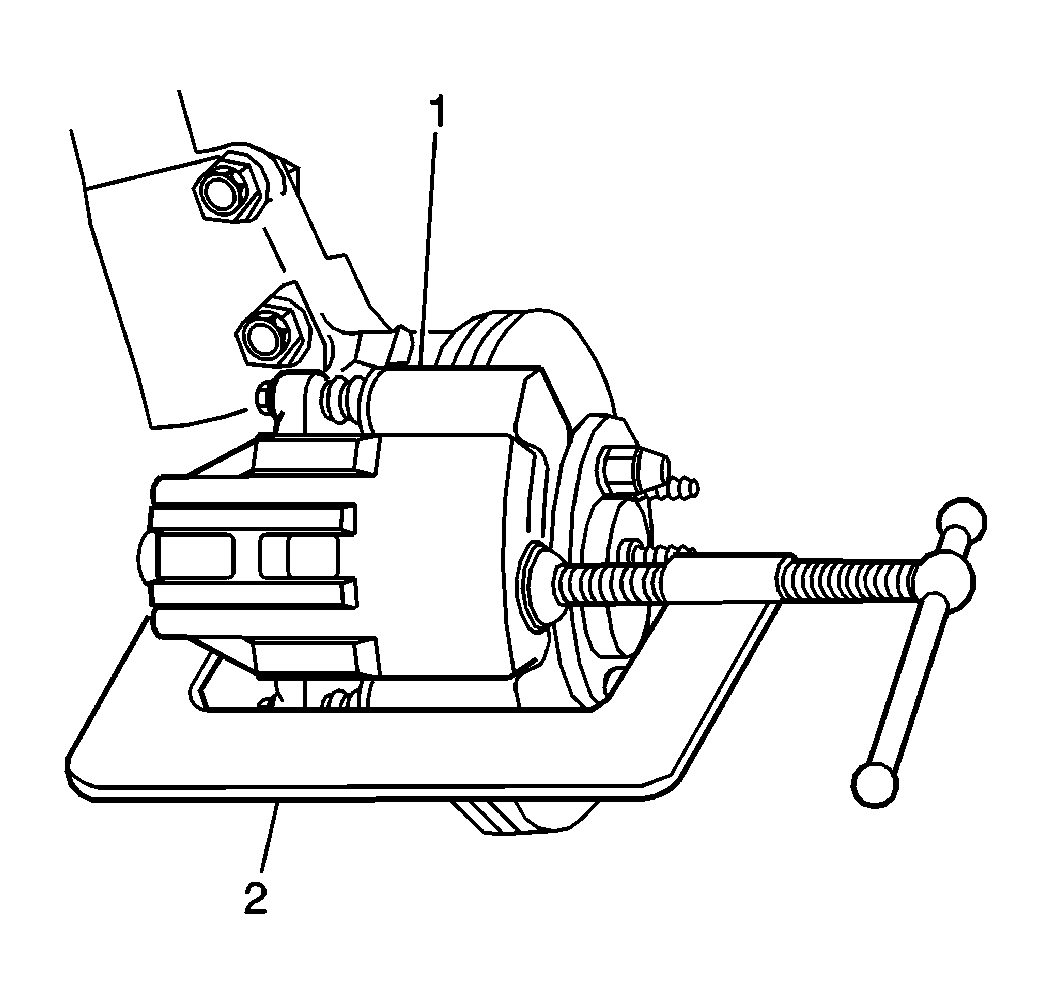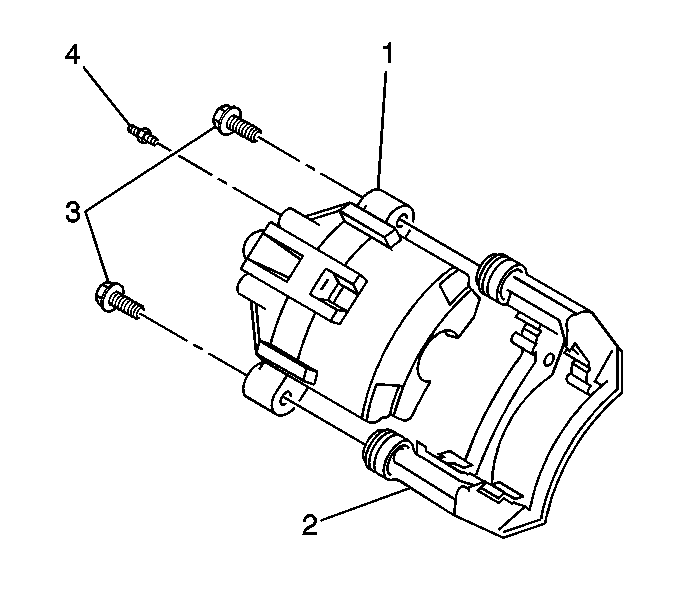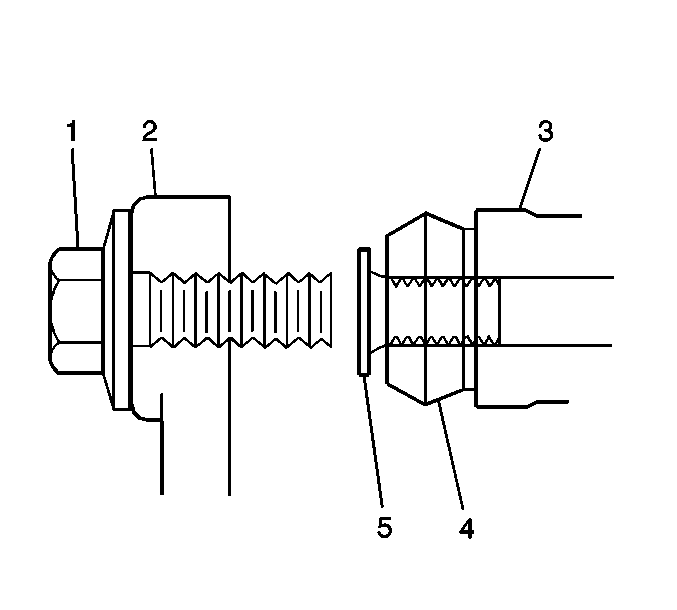Removal Procedure
- Inspect the fluid level in the brake master cylinder reservoir.
- If the brake fluid level is midway between the maximum-full point and the minimum allowable level, then no brake fluid needs to be removed from the reservoir before proceeding. If the brake fluid level is higher than midway between the maximum-full point and the minimum allowable level, then remove brake fluid to the midway point before proceeding.
- Raise and support the vehicle. Refer to Lifting and Jacking the Vehicle in General Information.
- Remove the tire and wheel. Refer to Tire and Wheel Removal and Installation in Tires and Wheels.
- Install two nuts to retain the rotor to the hub.
- Install a large C-clamp (2) over the top of the brake caliper and against the back of the outboard brake pad.
- Tighten the C-clamp until the caliper piston is pushed into the caliper bore enough to slide the caliper off the rotor.
- Remove the brake hose bolt (1).
- Remove the brake hose (2) from the brake caliper.
- Remove and discard the two copper brake hose gaskets (3). These gaskets may be stuck to the brake caliper and/or the brake hose end.
- Plug the openings in the brake caliper and the brake hose in order to prevent brake fluid loss and contamination.
- Clean off any dirt or corrosion on the brake caliper near the brake hose fitting.
- Remove the brake caliper bolts (3).
- Remove the brake caliper from the brake caliper bracket.
- Inspect the brake caliper pin boots (4) for the following conditions:
- If the caliper pin boots are damaged, inspect the caliper pins for corrosion or damage. If corrosion is found on the brake caliper pin shaft, replace the brake caliper pin and the brake caliper pin boot. Do not attempt to polish away the corrosion.



Notice: Do not allow calipers to hang from the flexible hoses. Doing so can damage the hoses.
| • | Cuts |
| • | Tears |
| • | Deterioration |
| • | Replace the bolt boots if damage exists. Refer to Front Brake Caliper Overhaul . |
Installation Procedure
- Ensure that the caliper pin boots (4) are properly installed.
- Install the caliper (1) to the caliper bracket (2) .
- Apply LOCTITE® DRI-LOC® 201 (GM P/N 12345493) or equivalent to the threads of the brake caliper pin bolts (1).
- Install the brake caliper pin bolts (upper bolt first).
- Remove the plugs in the brake hose end.
- Assemble the brake hose bolt (1) and the NEW copper brake hose gaskets (3) to the brake hose (2).
- Install the brake hose bolt to the brake caliper.
- Remove the nuts securing the rotor to the hub.
- Install the tire and wheel. Refer to Tire and Wheel Removal and Installation in Tires and Wheels.
- Lower the vehicle.
- Fill the master cylinder to the proper level with clean brake fluid. Refer to Master Cylinder Reservoir Filling in Hydraulic Brakes.
- Bleed the brake system . Refer to Hydraulic Brake System Bleeding in Hydraulic Brakes.
- Pump the brake pedal (3/4 of a full stroke) as many times as necessary to obtain a firm brake pedal.
- Apply approximately 778 N·m (175 lb ft) of force to the brake pedal for ten seconds.
- Inspect the brake caliper and hydraulic brake system for brake fluid leaks.



Notice: Use the correct fastener in the correct location. Replacement fasteners must be the correct part number for that application. Fasteners requiring replacement or fasteners requiring the use of thread locking compound or sealant are identified in the service procedure. Do not use paints, lubricants, or corrosion inhibitors on fasteners or fastener joint surfaces unless specified. These coatings affect fastener torque and joint clamping force and may damage the fastener. Use the correct tightening sequence and specifications when installing fasteners in order to avoid damage to parts and systems.
Tighten
Tighten the brake caliper bolts to 35 N·m (26 lb ft).

Important: Install NEW copper brake hose gaskets (3).
Tighten
Tighten the brake hose bolt to 54 N·m (40 lb ft).
